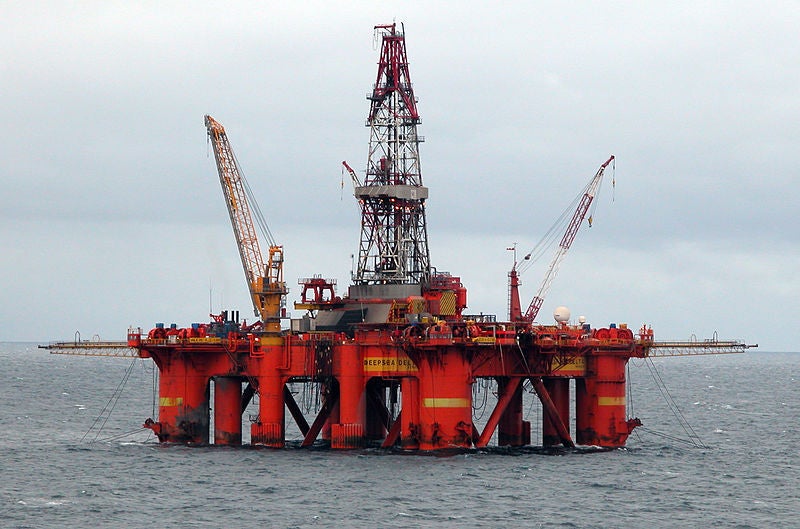
A new report called ‘The Oil and Gas Industry in Energy Transitions’, published by the International Energy Agency (IEA) on 20 January 2020, asks a pivotal question: ‘should today’s oil and gas companies be viewed only as part of the problem, or could they also be crucial in solving it?’
This question – set against a backdrop of increasing social, economic and policy demands to reduce greenhouse gas emissions in line with the Paris agreement – is one that requires urgent response from within the industry itself.
As IEA executive director Dr Fatih Birol says in the report: “Without the industry’s input, these technologies may simply not achieve the scale needed for them to move the dial on emissions.”
This is echoed by Thomas Leurent, CEO of Akselos, a simulation technology software company, who says: “Every scrap of CO2 that we can avoid releasing matters and therefore oil and gas companies have the responsibility to be as carbon efficient as possible while we move towards renewables.”
So what can be done? Here are five starting points.
Run hyper-efficient operations
With instabilities in the oil market, producers are already looking to optimise operations to compensate for price fluctuations and increase cost efficiency. Running hyper-efficient operations could reduce their operational costs while helping to tackle emissions.
How well do you really know your competitors?
Access the most comprehensive Company Profiles on the market, powered by GlobalData. Save hours of research. Gain competitive edge.

Thank you!
Your download email will arrive shortly
Not ready to buy yet? Download a free sample
We are confident about the unique quality of our Company Profiles. However, we want you to make the most beneficial decision for your business, so we offer a free sample that you can download by submitting the below form
By GlobalDataAs extracting fossil fuels is a very energy-intensive process, Leurent suggests that companies should take full control and have visibility over their assets so they can easily find ways to improve their design and operation.
“A strong strategy should clearly lay out the skills, technology, and infrastructure needed, as well as how firms can retroactively address emissions through programmes like carbon capture. This helps reduce both energy consumption costs and operating costs simultaneously,” says Leurent.
This optimisation and establishment of clear strategies can make oil companies significantly more sustainable while they remain competitive; it will protect jobs, and secure future energy supply.
Address all emissions, especially Scope Three
Another important consideration is addressing scope three emissions and taking responsibility for all harmful gases produced. With the latest announcements from BP, Shell, Total, and Equinor that they will include scope three emissions in their greenhouse gas accounting disclosures, and set targets to reduce carbon intensity of their offshore products, it seems like operators are finally recognising the elephant in the room.
Highly influenced by pubic and shareholder pressure, the industry is also starting to take responsibility for downstream emissions from their products.
“Crucially, firms need to set clear metrics for success by committing to absolute targets for scope three emissions and then strategising around how to get there. That will be at the heart of whether they can shift business model towards something genuinely carbon neutral and sustainable,” Leurent says.
Extend the life of existing assets
A significant challenge that operators face is the mixture of declining commodity prices, rising input costs, and ageing assets, while they are expected to meet even stricter regulations, improve safety, and reduce product costs and emissions. For this reason, extending the life of existing assets, instead of building new ones, might be a crucial step towards decreased emissions.
According to Leurent: “Between now and 2040, it’s estimated that roughly 250 assets around the world will need to be decommissioned. However, decommissioning existing assets means nothing if companies are simultaneously building new ones elsewhere.”
Instead, companies should focus on extending the life of their existing assets as to provide the fuel needed during the ongoing transition to renewables.
In order to help them make these decisions, it might be more efficient if planned time-based maintenance strategies and regulations are implemented in the field and their progress is monitored.
In addition, the introduction of digital technology in the industry should be encouraged as it can contribute to reduced maintenance requirements, create fewer manned rigs with lower emissions, and improve safety.
Embark on green initiatives
Another option is the increase of green projects being undertaken by oil and gas producers.
“There are all sorts of green technology that offshore operators can deploy to be more environmentally friendly, such as carbon capture. One of the most important is ensuring that assets don’t suffer any sudden or unexpected failures which could result in serious spills,” Leurent advises.
For example, Chevron has made a significant investment in clean energy by creating its Gorgon carbon capture and storage project in Australia, built to help limit its own emissions by capturing up to four million tonnes of carbon dioxide per year.
BP has also increased its investment in the UK solar venture Lightsource as it targets a deal that will power the company’s offices with renewable energy.
IEA’s research also highlights that an essential step would include increased investment in low-carbon fuels such as hydrogen, biomethane, and advanced biofuels which will need to account for around 15% of overall investment in fuel supply in the next ten years, in order to make an impact on climate change.
Despite increasing attempts of major operators, IEA’s report emphasises that Big Oil spent only 1% of its budget on renewable energy for 2018, which begs the question of whether their efforts are part of a greenwashing trend or can actually show real results.
Be part of the change
As “making the transition towards renewables requires a great deal of investment which can result in companies being at a competitive disadvantage”, Leurent admits that it might be difficult for some operators to act alone. For this reason, he proposes all companies support decarbonisation initiatives, such as the one put forward by the Oil and Gas industry UK (OGUK), to bring the UK to net-zero emissions by 2050.
As part of its recently released Roadmap to 2035, one of the first government responses to climate change in the UK, OGUK demonstrates its strategies to simultaneously help meet the UK’s energy needs and reduce the rate of emissions by growing the economy and its exports. It also involves: staying on track to reduce carbon emissions from the current 24 million tonnes of carbon dioxide-equivalent emissions per year to 0.5 tonnes from offshore oil and gas production by 2050, implementing better monitoring, reducing flaring, supporting post-Brexit carbon trading, and the development of hydrogen projects.
Taking part in such initiatives can strengthen the offshore industry with more social acceptance; in addition, this could be a helpful steppingstone for operators to secure their business in an age increasingly leaning towards clean energy transitions. Their active role in projects outside their immediate field can help them adjust to the changing global energy dynamics.





